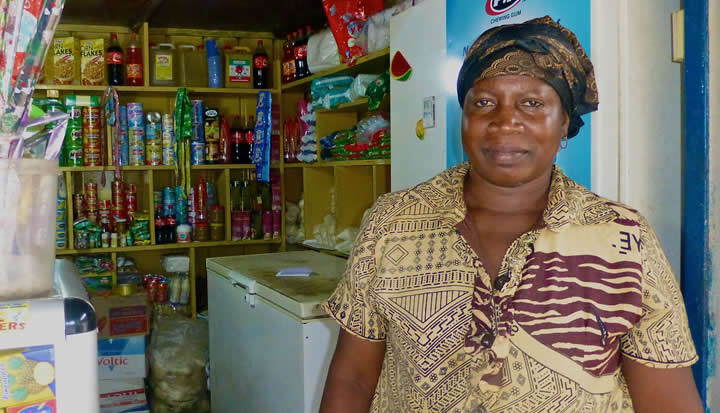Holger Rothenbusch, Managing Director, Debt and Financial Institutions, CDC
It’s well known that small and medium enterprises (SMEs) have an important role to play in the economic development of developing countries. In Africa, they contribute to around 40% of GDP as well as 50% of overall employment. In some sectors, this level of job creation can be even higher – for example, informal and formal SMEs account for about three-quarters of total employment in manufacturing.[1]
However, in order to grow, SMEs need adequate levels of finance. A recent IFC jobs study confirmed that access to finance is one of the top three factors preventing businesses from growing and generating employment in developing countries.[2] Whilst it’s an important factor for all sizes of business, for SMEs it’s the most critical limitation to growth.
Financial institutions can play a crucial role in improving access to finance – they are able to channel capital to specific target markets which are underserved, including SMEs, micro clients, or customers in rural areas.
Yet, currently, banks are not able to provide SMEs in developing countries with the levels of capital they need to grow. The total unmet need for credit by formal SMEs in sub-Saharan Africa is estimated to be between US$80 – US$100 billion, the highest gap when compared with other regions of the world[3]. The top five banks serving MSMEs in non-OECD countries reach only approximately 20% of formal MSMEs and in sub-Saharan Africa, this number is even lower, at 5%.[4]
One of the main barriers faced by SMEs is the attitude of banks towards such businesses. Banks view SMEs as inherently risky for a number of reasons. Many are deterred from lending to SMEs because of the lack of adequate information they are able to provide. Other challenges include SMEs’ level of informality and their inability to provide adequate security. In other words, SMEs require more work – so even though there is potential to achieve significant impact in this sector, banks are discouraged from lending.
Nonetheless, a recent study from the African Development Bank demonstrates that banks have started to develop coping mechanisms to overcome the obstacles which discourage them from lending to SMEs.[5] For example, many banks have established separate units to be more responsive to the needs of their SME clients, in recognition of the inherent differences between SMEs and consumer and corporate clients; and some of them are allocating resources to provide training to their SME clients to improve their management skills and financial reporting. The study concludes that this is promising news for closing the ‘SME financing gap’, and that this trend should be supported and encouraged.
How is this relevant to CDC? Our mission is to support the building of businesses and job creation in Africa and South Asia, and our investments are measured by the difficulty of the geography and the propensity of the business sector in which we invest to create jobs. By focusing on local banks and financial institutions, we’re looking at new ways to get capital to businesses such as SMEs, which we may not be able to directly finance efficiently. Financial institutions have the added advantage of being significant in size and thus able to absorb capital more efficiently. This enables CDC to channel a significant amount of capital to some of the hardest countries in the geographies where we invest.
That’s why we’ve recently invested in banks with a specific remit to finance SMEs. This includes DFCU Bank in Uganda, which focuses on tackling the lack of long-term funding for SMEs in a country where SMEs contribute around 70% to GDP. It also includes a recent investment in RBL Bank in India, which is pursuing an expansion strategy of financial inclusion focused on, amongst others, agribusiness financing and lending to SMEs in a country where 65% of the population do not have access to formal financial services. In making these kinds of investments, we hope to help tackle the huge funding gap that SMEs currently face, supporting them to access the finance they need, to grow, and to create jobs.
[1] Ayyagari, M., Beck, T., and Demirgüç-Kunt, A., ‘Small and Medium Enterprises across the Globe’, Small Business Economics 29, 2007
[2] IFC Jobs Study, 2013
[3] McKinsey & Company, ‘Micro-, Small and Medium-Sized Enterprises in Emerging Markets’, 2010
[4] IFC, ‘Posing the Challenge on SME Finance’, DFI Meeting Paris, March 2011
[5] African Development Bank, Working Paper on ‘Bank Financing to Small and Medium Enterprises in Africa: Findings of a Survey in Kenya, Tanzania, Uganda and Zambia’, 2012











2 Responses
Dear Holger,
Your points are absolutely valid here – SMEs in my mind are the engine of growing an economy from the “bottom-up” – enable a business in a town, city or village to stock better, manage finances better and sell faster, then you have an interesting move forward.
The challenge, as you have said, is most banks cannot (will not?) support MSMEs or SMEs.
Perhaps another approach to help distribute efficiently is to take a “top-down” approach. Work with a Coca-Cola or a Unilever to push change through their retail distribution network to bring in more efficient supply chain payments, support spread of technology etc. From experience, the challenge is that FMCG organisations need to see the business case to make a change from how they function today. I’ve worked with very large international banks that have a vested interest to bring in more business from commercial banking clients – but even they are unable to agree revenue share and investment to deploy new technology for example to make MSMEs traceable and eventually financeable…
Just thoughts.
Great blog, thanks for sharing.
Prateek
Holger
A few further thoughts.
One of the biggest myths about SME investing in Sub Saharan Africa is that there is a shortage of funding available for SMEs. On the contrary, there is a wall of money wanting to invest in SME opportunities but the sponsoring organisations set hopelessly unrealistic risk/return requirements which few SMEs are able to meet.
SME investing the World over is a risky business and even more so in Africa. All developed economies need a range of investment incentives, mainly tax driven, to encourage investment into the SME sector. These are completely absent in Africa and yet the risks are far greater. It is quite simply wishful thinking to believe banks are going to be significant funders of African SMEs in absence of adequate security, and in most cases this is not available – that leaves equity financing as the only viable option. There are very few SME investment opportunities which even get close to meeting the risk/rewards requirements of equity investors. Potential equity investors in African SMEs need a reality check – generating double digit net IRRs across a range of investments is for most completely unachievable – and yet many of the DFIs continue to search for this return. This leads funds and others to construct scenarios suggesting such a return is feasible, which by and large leads to disappointment with the returns achieved. The few funds which do generate such returns mission creep to larger investments, the rest fail to raise further funding. Quite simply if you want to invest in African SMEs you have to recognise that securing a simple return of your capital is a good result.
But this misses the most important constraint on SME investing in Africa and that is a lack of human capital both to run SME companies and to run the investment vehicles to invest in the SMEs. You need to have experience across investment cycles before you become a competent venture capital investor, and that takes at least ten years to achieve. This means that most African venture capital investment managers need to draw on experience available internationally to develop the required experience and expertise.
The solution is simple. First capital needs to be deployed behind the very best SME investment professionals or those with access to these skills. Second this capital needs to have realistic return requirements. This recognises that management comes first, or else you never break the catch 22 of not being able to attract the right management without a fund and not wanting to invest in a fund without the right management.
I would suggest the above approach is a realistic “commercial” approach. But ideally you need something more than this to encourage an expanded pipeline of SME investment ready opportunities. You need capital which can take the risk of start up investing in sectors where the host African country has comparable advantage. This capital is even less likely to be able to generate commercial returns but should be deployed to help develop investable opportunities for those seeking commercial returns. This capital should never be deployed to crowd out the commercial investor. And this is quite a challenge, which a conventionally run investment manager would always struggle to deliver on.
So my message to those interested in SME investing in Africa, is simple – focus on people with the right management skills and experience, support them with funding based on a realistic assessment of what can be achieved and be delighted when you secure a positive return on that capital. If that doesn’t do it for you then give up on your aspirations to be African SME investors.
Robert